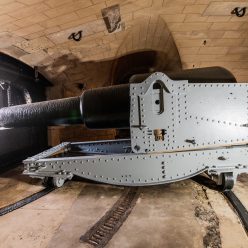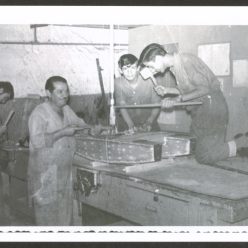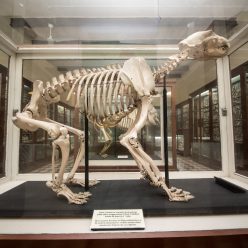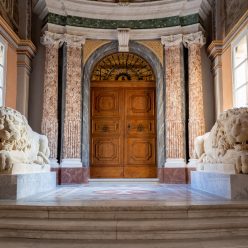by Warren Bugeja and Michelle Padovani
Above an unassuming doorway in a residential quarter of Rabat lies a plaque bearing the words ‘Ad Catacumbas’. Rather than being invited into someone’s front parlour, the doorway swings open instead onto a rock-hewn staircase descending deep into the bowels of an ancient necropolis.
Field Archaeologist Michelle Padovani promptly leads the ‘Treasure to Meet You’ crew down to the subterranean world of St Augustine’s Catacombs, which since 2008, falls under Heritage Malta’s remit. The underground necropolis originally formed part of a vast cemetery, including the catacombs of St Paul, St Agatha and St Cataldus, that sprawled outside the walls of Melite, the ancient Roman capital of Malta. Catacomb burials began being practised from the 4th century AD. St Augustine’s catacombs consist of three small hypogea, a group of individual graves clustered together in one dug-out underground space. These three hypogea were originally separate spaces, however, were connected to each other via an underground tunnel dug during the 1920s. They are located only a few metres away from St Paul’s Catacombs and are named after the Augustinian friars, who once owned the land in later ages.
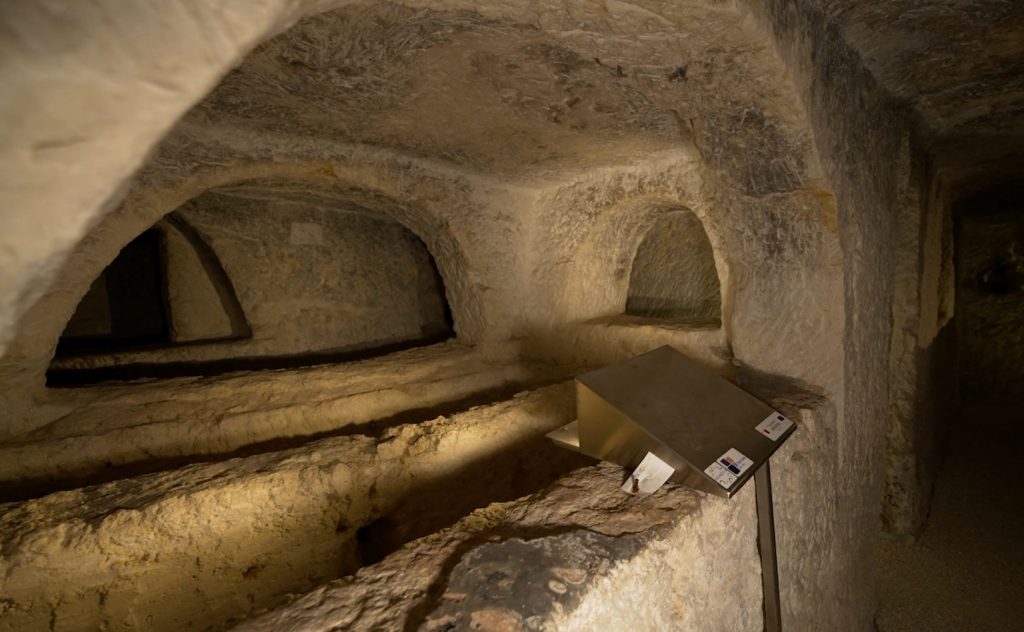
At the bottom of the staircase, we encounter a C-shaped Triclinium or Stibadium, a circular table surrounded by an inclined platform cut out of the bedrock. A funerary repast known as the refrigerium was held around this table, and mourners probably reclined on the semi-circular platform encircling it. However, the Triclinium, or Agape table as the Christians referred to it, is not why we are here.
The object of our visit lies further afield. Circumventing, we now find ourselves in catacomb two of the Augustinian underground complex. Here we encounter three baldacchino tombs. The baldacchino tomb, is the most elaborate of the many types of catacomb graves, consisting of a free-standing, stone sarcophagus surmounted by a four-arched canopy (baldacchino is Italian for canopy). “This type of tomb required quite a bit of skill and time to carve and is therefore considered to have been reserved for individuals of high social status,” Michelle explains as we navigate the narrow and dimly lit corridors of this cluster of individual graves.
Michelle suddenly halts in front of tomb no 24, also a baldacchino type grave; the canopy is a giveaway. Michelle has singled number 24 as her ‘artefact’ of choice within the National Collection for Heritage Malta’s HMTV series ‘Treasure To Meet You.’
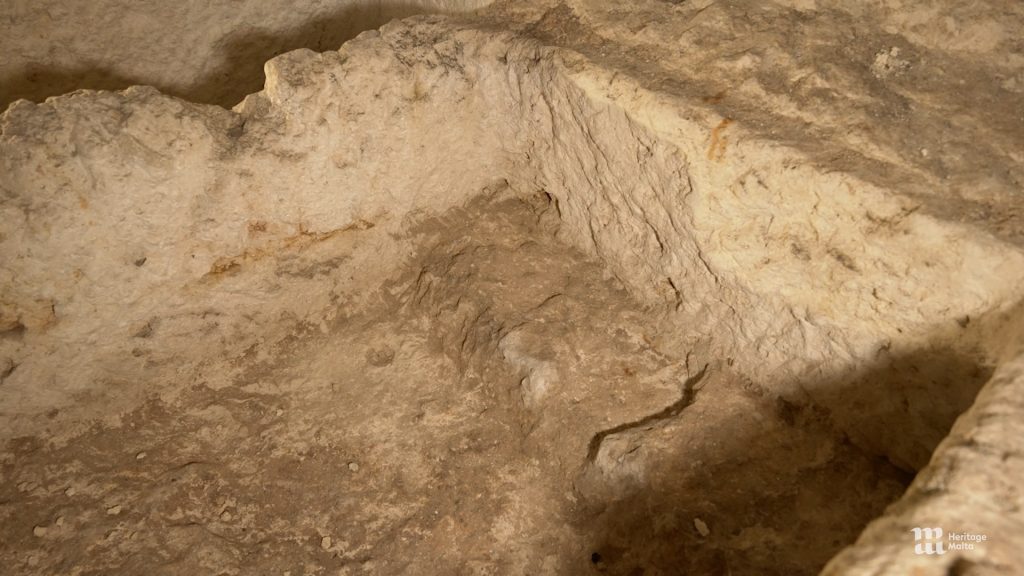
Upon face value, the tomb, while grand in size and structure, seems no different from the other graves we have passed by. In Michelle’s own words, “It is not the most aesthetically pleasing of funerary monuments.” It does not, for example, have any designs carved out in relief, such as the stylised pillars adorning the window tombs we have just seen. Evidence from other baldacchino tombs, nevertheless, suggests number 24 may have originally been covered in a layer of plaster and decorated. One striking feature, though, sets this tomb apart from the other baldacchino graves in this complex, which tend to follow the same design and measurements. It takes an archaeologist to notice. The burial cut on the northern side of the twin grave is almost double the usual width. “We believe that this was to accommodate for an overweight individual,” Michelle points out. “I find this to be quite interesting since it gives a clear example of how the gravediggers would have to modify the tombs to meet the needs of the individual being buried,” she continues animatedly, framed by one of the arches of the tomb.
Michelle considers the extra pains taken by the gravediggers to be a relatable process. The table and canopy would have been carved first, followed by the burial trough for the larger individual. However, when the gravediggers came to scoop the second grave out of the bedrock, there was not enough room, so they proceeded to make room by cutting into the lower part of the arch on the southern side of the narrower grave. “The thought process that would have gone into solving a problem is the same as our own thought process today.”
One of the tomb’s most human and timeless features is what appears to be a low, stone step at one end of the grave. The step is, in fact, a pillow, a final resting place for individuals to lay down their cares and aspirations in the afterlife. A circular depression is carved into the pillow to stop the head from moving throughout the individual’s repose in eternity.
Watch the feature here in English or Maltese
‘Treasure to Meet You’ is uploaded to Heritage Malta’s Facebook page every fortnight at 19:00. The intimate series consists of short features in both English and Maltese versions. Each week, viewers get to meet one of our dedicated curators, who were asked to select an artefact or feature from the National Collection to which they are particularly attached.
Treasure to Meet You Episode 8
Latest News
Press Releases | 19th April 2024
A Vibrant Special Opening at Fort Delimara
Press Releases | 8th April 2024
Objects Missing From the Grand Master’s Palace
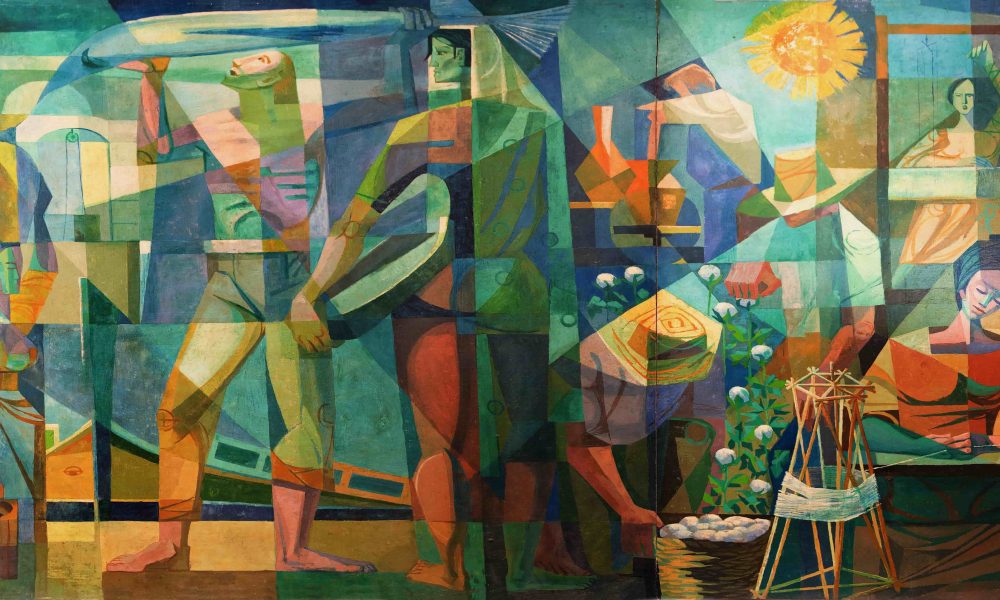
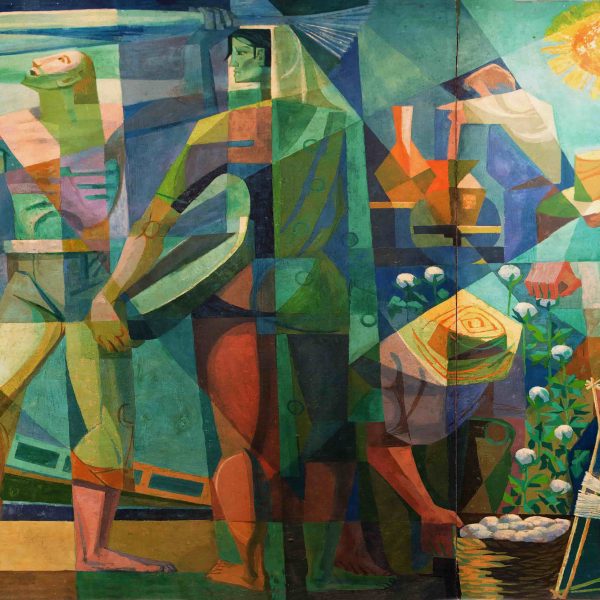
Up Next
Press Releases | 28th November 2022

